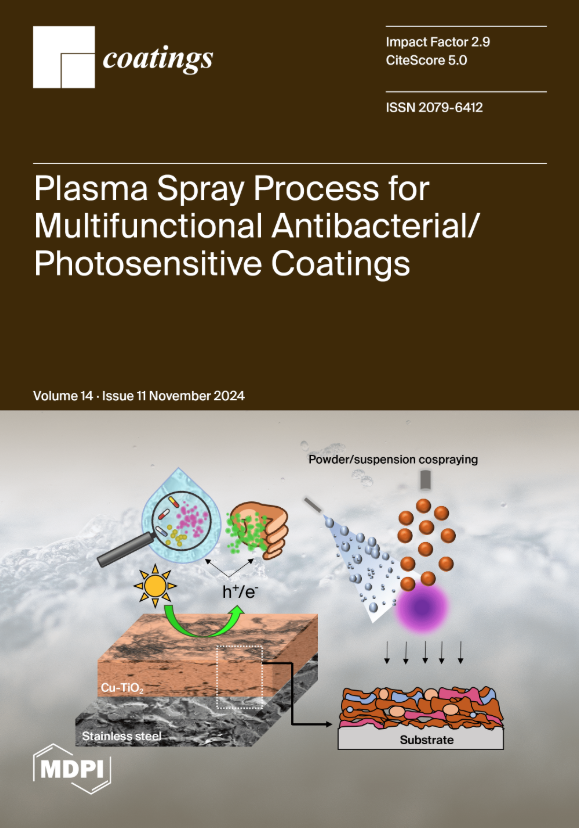ULPING-Based Titanium Oxide as a New Cathode Material for Zn-Ion Batteries
IF 2.8
3区 材料科学
Q2 MATERIALS SCIENCE, COATINGS & FILMS
引用次数: 0
Abstract
The need for alternative energy storage options beyond lithium-ion batteries is critical due to their high costs, resource scarcity, and environmental concerns. Zinc-ion batteries offer a promising solution, given zinc’s abundance, cost effectiveness, and safety, particularly its compatibility with non-flammable aqueous electrolytes. In this study, the potential of laser-ablation-based titanium oxide as a novel cathode material for zinc-ion batteries was investigated. The ultra-short laser pulses for in situ nanostructure generation (ULPING) technique was employed to generate nanostructured titanium oxide. This laser ablation process produced highly porous nanostructures, enhancing the electrochemical performance of the electrodes. Zinc and titanium oxide samples were evaluated using two-electrode and three-electrode setups, with cyclic voltammetry (CV), electrochemical impedance spectroscopy (EIS), and galvanostatic charge–discharge (GCD) techniques. Optimal cathode materials were identified in the Ti-5W (laser ablated twice) and Ti-10W (laser ablated ten times) samples, which demonstrated excellent charge capacity and energy density. The Ti-10W sample exhibited superior long-term performance due to its highly porous nanostructures, improving ion diffusion and electron transport. The potential of laser-ablated titanium oxide as a high-performance cathode material for zinc-ion batteries was highlighted, emphasizing the importance of further research to optimize laser parameters and enhance the stability and scalability of these electrodes.基于 ULPING 的氧化钛作为锌-离子电池的新型阴极材料
由于锂离子电池成本高昂、资源稀缺和环境问题,人们迫切需要锂离子电池以外的替代能源存储方案。锌离子电池提供了一种前景广阔的解决方案,因为锌资源丰富、成本效益高且安全,特别是与不易燃的水性电解质兼容。本研究调查了基于激光烧蚀的氧化钛作为锌离子电池新型阴极材料的潜力。研究采用了超短激光脉冲原位纳米结构生成(ULPING)技术来生成纳米结构的氧化钛。这种激光烧蚀过程产生了高多孔性纳米结构,从而提高了电极的电化学性能。利用双电极和三电极设置、循环伏安法 (CV)、电化学阻抗谱 (EIS) 和电静态充放电 (GCD) 技术对锌和氧化钛样品进行了评估。在 Ti-5W (激光烧蚀两次)和 Ti-10W(激光烧蚀十次)样品中确定了最佳阴极材料,这两种材料显示出卓越的电荷容量和能量密度。Ti-10W 样品的多孔纳米结构改善了离子扩散和电子传输,因此表现出卓越的长期性能。激光烧蚀氧化钛作为锌离子电池高性能阴极材料的潜力得到了突显,强调了进一步研究优化激光参数、提高这些电极的稳定性和可扩展性的重要性。
本文章由计算机程序翻译,如有差异,请以英文原文为准。
求助全文
约1分钟内获得全文
求助全文
来源期刊

Coatings
Materials Science-Surfaces, Coatings and Films
CiteScore
5.00
自引率
11.80%
发文量
1657
审稿时长
1.4 months
期刊介绍:
Coatings is an international, peer-reviewed open access journal of coatings and surface engineering. It publishes reviews, research articles, communications and technical notes. Our aim is to encourage scientists to publish their experimental and theoretical results in as much detail as possible. There is no restriction on the length of the papers. Full experimental and/or methodical details must be provided. There are, in addition, unique features of this journal:
* manuscripts regarding research proposals and research ideas will be particularly welcomed
* electronic files or software regarding the full details of the calculation and experimental procedure - if unable to be published in a normal way - can be deposited as supplementary material
 求助内容:
求助内容: 应助结果提醒方式:
应助结果提醒方式:


